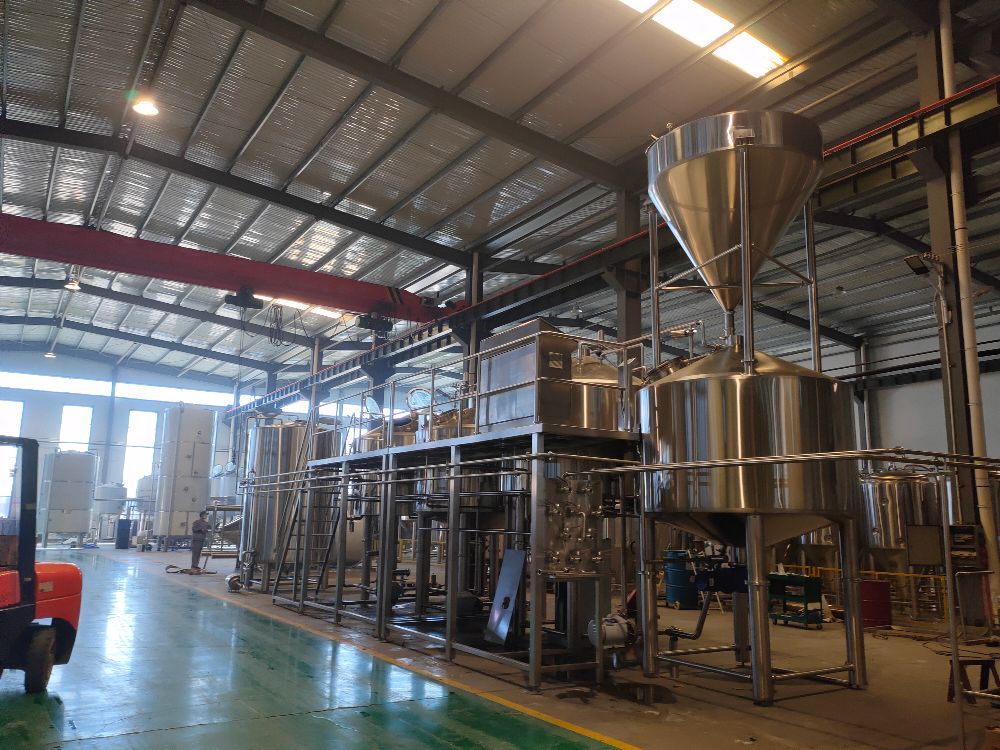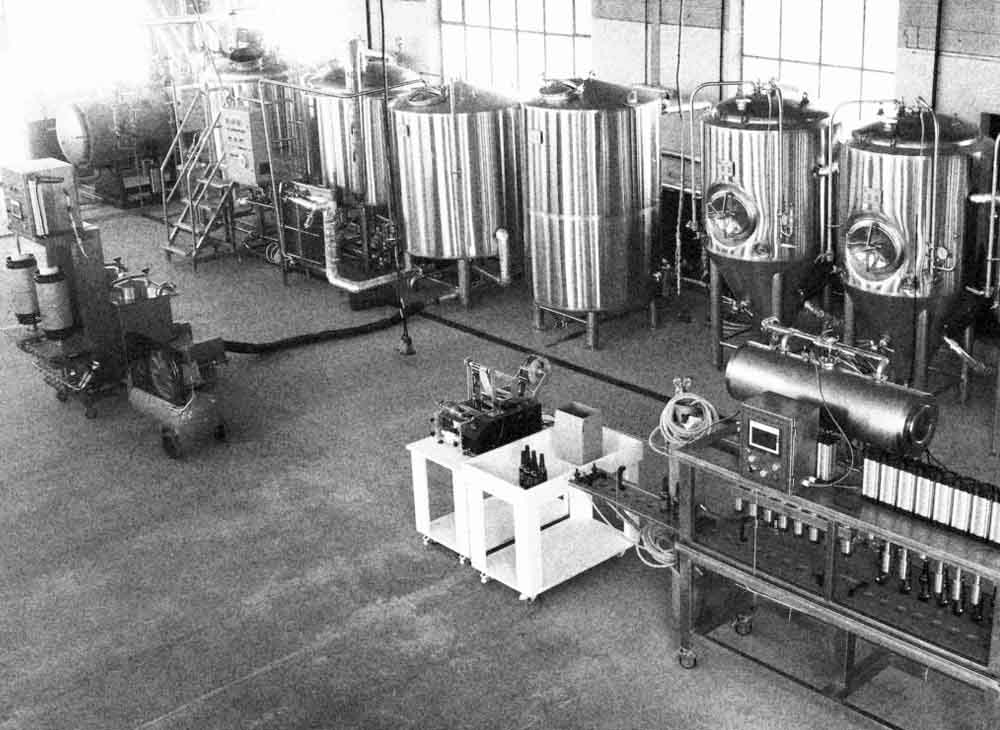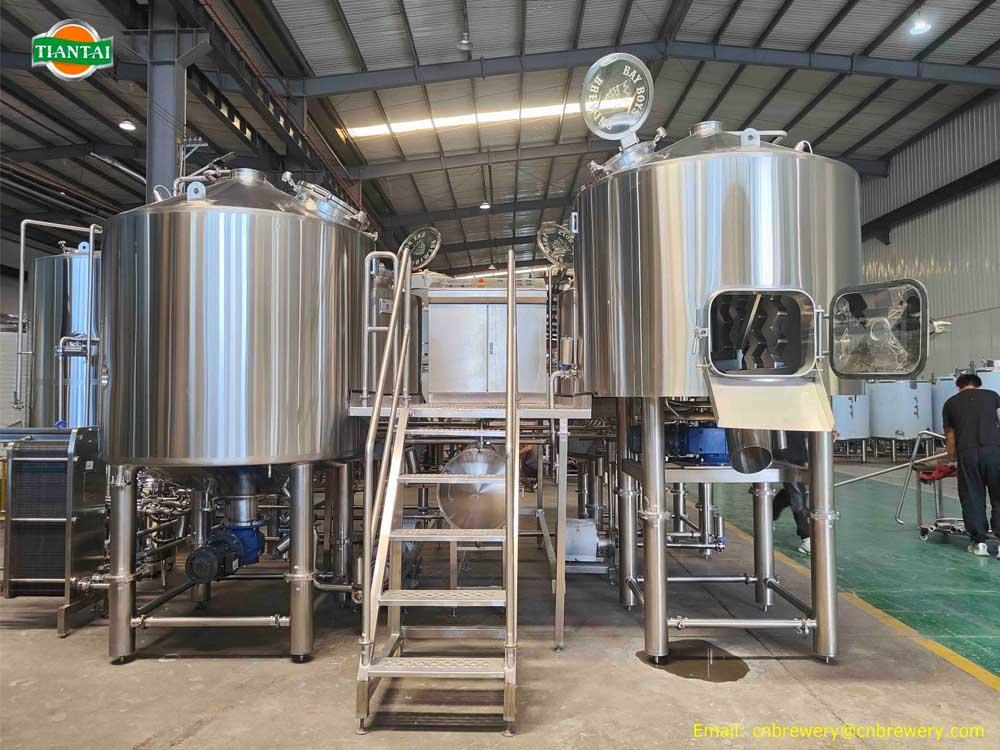Temperature Maintenance During the Beer Fermentation Process
- Dec 15, 2021
- 150
- tiantai
Brewing is an ancient art that dates back thousands of years and is well-documented in most major civilizations throughout history. In modern times, technology has made this tradition less of an art, and more of a science. With the invention of the steam engine, thermometers, and other technology advancements, most beer brewing was done on a very small scale and was very inconsistent, and included adverse flavors. Recipes varied by region of the world, families, ingredients, and climate. Brewing had become an art that was perfected through generations using archaic techniques that only experience from trial and error could hone. Methods and temperature control throughout the fermentation chilling process created a beer that is much different from the commonly consumed ales today.

Modern brewing has undergone its own revolution as the popularity and demand for small batch brews has grown. Microbreweries and home breweries have increased by over 40% in the last several years, with more than 1.4 million barrels of brew (1% of total U.S. production) coming from home brewers by 2017. Micro brewing is an ever-growing popular hobby that can be fairly easy to get into. The increasing availability and decreasing cost of process cooling equipment has enabled brewers to return to the roots of fermenting beer, but with a modern flare.
Fermentation Temperature Control
Regardless of the time or era beer was made in, fermentation was always the key to success. Fermentation is the process by which yeast turns the glucose in wort to ethyl alcohol and carbon dioxide gas. This is what gives beer its alcohol content and carbonation. The fermentation time varies depending on temperature, type of yeast used (dry or liquid) and whether you are producing a lager or beer. Beer takes about 1-3 days to ferment when dry yeast is used and approximately 8-14 days to ferment when liquid yeast is used. Because lagers ferment at a cooler temperature, the fermentation process takes 2 weeks or more.
An important factor to keep in mind during the brewing process is temperature . Ideal beer fermentation temperature is between 68 and 72° F. Lager requires lower temperatures, between 45 and 55°F. Fermenting above these ideal temperature ranges will result in the production of extremely fruity-flavored esters and harsh-flavored fusel alcohols.If the temperature gets too high, fermentation may stop altogether. Keeping your ale or lager within the ideal temperature range is important but can be difficult. Even when ambient temperatures are in the correct range, heat generated during the fermentation can warm a 5 gallon batch of beer 10-15°F.
How to Keep Your Brew Cool
Historically, most beers were brewed during cooler months and stored in cellars or caves to maintain proper temperatures. Today, however, there are several steps that can be taken to help keep your brew at the correct temperature year-round.
Evaporation
You can use the cooling power of evaporation to your advantage by wrapping your carboy in a damp beach towel and placing it in a basin or tub filled with an inch or two of water. The towel will wick water from the basin and keep your brew cool as the water evaporates. This method may not be as effective in humid conditions, but the evaporation can be helped along with an electric fan kept pointed toward the carboy.
Air Conditioning
Another simple method of keeping your brew cool is to place your carboy
directly in front of an air conditioning vent. This will allow your brew to receive the initial cool blast of air before it circulates through your home. Ideally, this means you won’t have to crank down the temperature too low.
Ice
Some craft brewers recommend placing your carboy in a basin filled with water and adding 1-2 ice packs or frozen water bottles. The packs or water bottles should be replaced twice a day to keep your brew properly cool.

Modern brewing has undergone its own revolution as the popularity and demand for small batch brews has grown. Microbreweries and home breweries have increased by over 40% in the last several years, with more than 1.4 million barrels of brew (1% of total U.S. production) coming from home brewers by 2017. Micro brewing is an ever-growing popular hobby that can be fairly easy to get into. The increasing availability and decreasing cost of process cooling equipment has enabled brewers to return to the roots of fermenting beer, but with a modern flare.
Fermentation Temperature Control
Regardless of the time or era beer was made in, fermentation was always the key to success. Fermentation is the process by which yeast turns the glucose in wort to ethyl alcohol and carbon dioxide gas. This is what gives beer its alcohol content and carbonation. The fermentation time varies depending on temperature, type of yeast used (dry or liquid) and whether you are producing a lager or beer. Beer takes about 1-3 days to ferment when dry yeast is used and approximately 8-14 days to ferment when liquid yeast is used. Because lagers ferment at a cooler temperature, the fermentation process takes 2 weeks or more.
An important factor to keep in mind during the brewing process is temperature . Ideal beer fermentation temperature is between 68 and 72° F. Lager requires lower temperatures, between 45 and 55°F. Fermenting above these ideal temperature ranges will result in the production of extremely fruity-flavored esters and harsh-flavored fusel alcohols.If the temperature gets too high, fermentation may stop altogether. Keeping your ale or lager within the ideal temperature range is important but can be difficult. Even when ambient temperatures are in the correct range, heat generated during the fermentation can warm a 5 gallon batch of beer 10-15°F.
How to Keep Your Brew Cool
Historically, most beers were brewed during cooler months and stored in cellars or caves to maintain proper temperatures. Today, however, there are several steps that can be taken to help keep your brew at the correct temperature year-round.
Evaporation
You can use the cooling power of evaporation to your advantage by wrapping your carboy in a damp beach towel and placing it in a basin or tub filled with an inch or two of water. The towel will wick water from the basin and keep your brew cool as the water evaporates. This method may not be as effective in humid conditions, but the evaporation can be helped along with an electric fan kept pointed toward the carboy.
Air Conditioning
Another simple method of keeping your brew cool is to place your carboy
directly in front of an air conditioning vent. This will allow your brew to receive the initial cool blast of air before it circulates through your home. Ideally, this means you won’t have to crank down the temperature too low.
Ice
Some craft brewers recommend placing your carboy in a basin filled with water and adding 1-2 ice packs or frozen water bottles. The packs or water bottles should be replaced twice a day to keep your brew properly cool.




